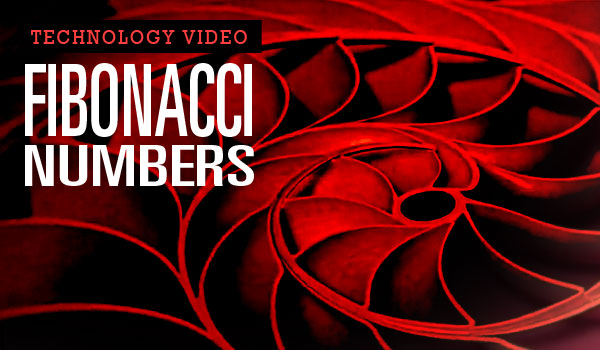Technology Video: Fibonacci Numbers
Cary, NC – The latest in our S.T.E.M. video series concerns Fibonacci Numbers, also known as the Golden Ratio. It is a sequence of numbers that influence mathematics, science, engineering, art and religion. This video also has the virtue of being beautiful to watch.
Fibonacci Sequence
Leornardo of Pisa (1170-1250), also known as Fibonacci, was one of the most talented mathematicians of the Middle Ages.
His book, Liber Abaci, introduced two startling concepts to mainstream intellectual thought in Europe: Arabic numbers (0-9) to replace Roman numerals and the Golden Ratio, later called the Fibonacci Sequence.
Both Arabic numbers and the Fibonacci Sequence began in India, traveling across Persia (modern day Iran) to the Middle East and North Africa.
Fibonacci numbers seem at first glance to be amazingly simple: start from 1, add the number to what came before and move on. It looks like this:
0+1=1
1+1=2
2+1=3
3+2=5
5+3=8
8+5=13
13+8=21
21+13=34
34+21=55
What is incredible about the Fibonacci Sequence is that this pattern of numbers is mirrored everywhere in nature: flowers, insects, snails. Expressed as a ratio, it is 1.618, also known as the Golden Mean or Ratio. Ancient Greek mathematicians including Pythagoras and Euclid explored the Golden Mean.
Renaissance artists, keen on understanding a wide variety of educational disciplines, latched onto the Fibonacci Sequence in works like Leornardo Da Vinci’s Vitruvian Man a study of human proportions.
According to Wikipedia:
[Modern] applications include computer algorithms such as the Fibonacci search technique and the Fibonacci heap data structure, and graphs called Fibonacci cubes used for interconnecting parallel and distributed systems.
They also appear in biological settings, such as branching in trees, Phyllotaxis (the arrangement of leaves on a stem), the fruit spouts of a pineapple, the flowering of artichoke, an uncurling fern and the arrangement of a pine cone.
Today, the Fibonacci Sequence has importance in science, engineering, math, technology and even advertising. We use Fibonacci spirals to tight up graphic design for everything from brochures to business cards and banner ads. Yes, we use math to help improve the click-through rate and effectiveness of advertising design.
In some quarters, the Fibonacci Sequence is seen as proof of divine guidance in the development of the cosmos.
Video: The Fibonacci Sequence
This beautiful video by director Cristobal Vila illustrates the Fibonacci Sequence. Music is by Wim Mertens. You can also see the video on YouTube.
——————————————————————————————————————————————————
S.T.E.M. video series is sponsored by Citizen Websites, the website design arm of CaryCitizen.




must say an AWESOME movie inspiring and thanku that helped in mah project :)
AWESOME!!!!!!!!!!
A sign of Intelligent design.
Fascinating. Though I always thought that book “Liber Abaci” was a biography of a gay pianist…